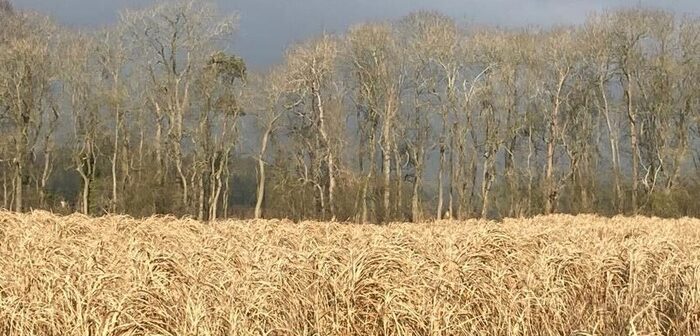A farm walk in Lincolnshire will take place next month to introduce interested farmers to the financial and environmental benefits of growing Miscanthus.
Farmer James Hoff will showcase his Terravesta AthenaTM crop, planted in spring 2022, at the Terravesta-hosted event, which will take place on 2 February.
He brings to the table nearly 20 years of experience growing Miscanthus, which he supplies in bales to his local power station in Brigg.
“We first planted Miscanthus in 2005 and the way we planted it was quite basic, compared to the knowledge we have now,” Mr Hoff said.
“We chose Miscanthus because we have lots of little bits of land that are too difficult to cultivate with modern, wide sprayers and cultivators and also some areas of difficult, heavier land.
Reasonable income
“The Miscanthus has always done well on this land and we’ve managed to get a reasonable income for very little work.”
Mr Hoff explains that the eight hectares originally planted would generate around £4,000 profit a year.
“That profit comes from land we haven’t had to do anything to and wouldn’t have got anything from otherwise,” he said.
“The trouble with alternatives such as wildflower mixes is that you have to maintain them every year, which is an expense, and the weather’s never quite right. Miscanthus really does look after itself.”
Mr Hoff decided to plant Terravesta AthenaTM in spring 2022 and increased the total cropping area from eight hectares to 20.
“From an environmental point of view, it’s fantastic because it harbours a lot of wildlife,” he said. “I believe there should be more financial support from the government to encourage the planting of Miscanthus. At the moment it’s focused on woodland but there is a large amount of time between planting woodland and seeing any benefit. With Miscanthus, you have your first harvest in two years.”
There are a range of environmental benefits associated with growing Miscanthus.
Minimal chemical application, zero fertiliser, no cultivation over a long period of time and ample leaf litter generated by the crop all encourages biodiversity, providing habitat for a wide range of wildlife.
It is also proven to restore soil health and fertility through increasing soil carbon and organic matter natural, restoring soil life.
Net carbon negative
“Miscanthus is net carbon negative, capturing 2.35 tonnes CO2e per hectare, per year in the soil at the very least,” Alex Robinson, Terravesta’s chief operating officer, said. “As innovations in bioenergy with carbon capture and storage become a reality, Miscanthus can play a significant role in CO2 reduction.
“Terravesta works with Miscanthus growers all over the UK, to service large and small-scale energy markets. Anyone interested in growing the crop and learning about our long-term buy-back contracts should come along to a farm walk to find out more.”
The Miscanthus farm walk in Lincolnshire will include a presentation from Terravesta in the field, and a tour of the crop.




